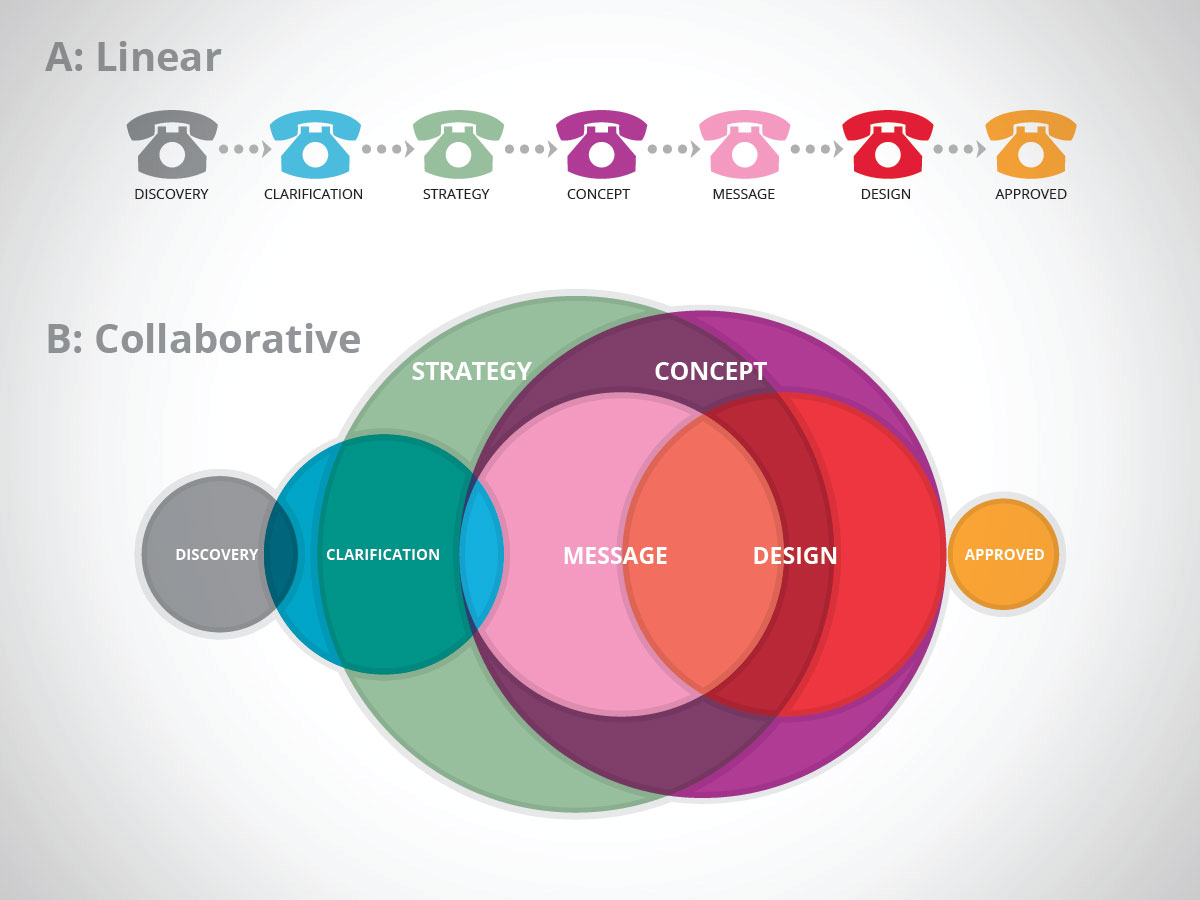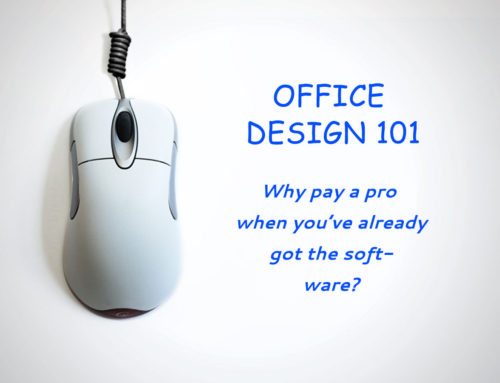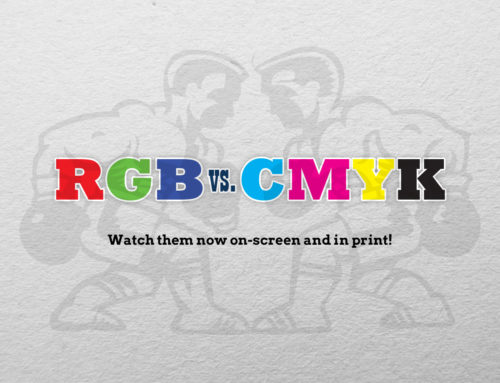Ever wonder how creative folks come up with the stuff they sometimes come up with?
It’s called the “Creative Process” but I like to think of it as basic problem solving. And the problems we creative-types deal with are as individual and specific as our clients are, but they can always be solved through effective and proactive communication.
So who defines the problem? Well… we do, with the client’s help. Our clients may think they have the problem clearly defined before they even speak to us and all they need to do is send us a written document, wait two weeks and come back to be blown away by our creative brilliance. That might work if our clients are willing to accept any solution that strikes our fancy at the time, but I doubt that’s the case. We need their help in steering our creativity towards a solution that solves their particular problem in the most memorable and effective manner possible.
The creative process starts and ends with you, the client. But don’t assume that’s all you get to be a part of. There’s the vast middle zone where anything can happen, good and bad. We want to avoid “bad”, and the best way to do that is to keep all interested parties engaged and involved during the process right up to the approval of concept and design.
The graphic below is a visualization of two ways to work within the creative process. There is nothing scientific about this… it’s just a visual so you can put a picture to the words I’m about to lay down.
Process A: This is a lot like the “Telephone Game” we played when we were kids (if you are playing this game at work, you might want to consider changing careers). Depending on who’s listening and who’s talking, the purpose and intent of the story will change as you go down the line. Sure, the path from “Discovery” to “Approved” is orderly and defined, but that’s about the only thing that’s good about this approach. Each phase of the process acts as an “information handoff” for the next phase to act upon. The successful execution of each phase depends upon the successful interpretation of the previous phase.
Due to a lack of continuous communication, interpretive errors in Message, Concept or Design may occur. These misunderstandings can only be traced back to the preceding stage. The later in the process these errors get noticed, the more work is required to backtrack and fix the issue.
Sometimes an interpretative error is so far gone that people find it easier to simply apply “bandaids” to the design, hoping like hell that the fundamental flaws will go unnoticed. To paraphrase: You can fool some of the clients some of the time, but they will look for a better solution provider next time.
Process B: This is a collaborative information exchange model. The VEN diagram style illustrates the intentional crosstalk and interaction between the phases in the process. The “Discovery” phase merges with a “Clarification” phase (Q&A) to ensure that the “Strategy” phase guides the rest of the creative process. “Strategy” and “Concept” phases take co-lead roles in the creative process, like directors of a play. “Message” and “Design” phases are allowed time to develop together under the direction of Strategy and Concept. The degree of interaction between phases is always going to be a variable depending upon the project. Flexibility is key to making this process work.
With a collaborative creative process in place, the results will always be unique and surprising. And rest assured they will be focused and on target to solve the initial communication problem as defined during the discovery and clarification phase. Everyone remains engaged as much as possible and on the same page (yes, even the client), which gives creative folks the best opportunity to deliver what our clients need.
Well, that’s a bunch of wordy-words to digest for sure. But all I’m really saying is that it’s best to communicate and collaborate on ideas. I probably should have led with that…
Let’s talk and create something great together.
As an Art Director and Designer, I am responsible for developing visual solutions that are smart, simple and surprising. In addition to strategic design, I enjoy illustration, animation and soundtrack design. My visual portfolio covers the communications spectrum from investor relations to consumer marketing (B2B and B2C). My design solutions range from websites to tradeshows, and have earned international recognition for many of my clients including The University of Calgary, Enerflex, Freehold Royalties and Gran Tierra Energy. With more than 24 years of communication and design experience, I have been a creative force behind the corporate brands of WestJet, Total E&P, SAIT, Crescent Point Energy, Newalta and many more.







Leave A Comment